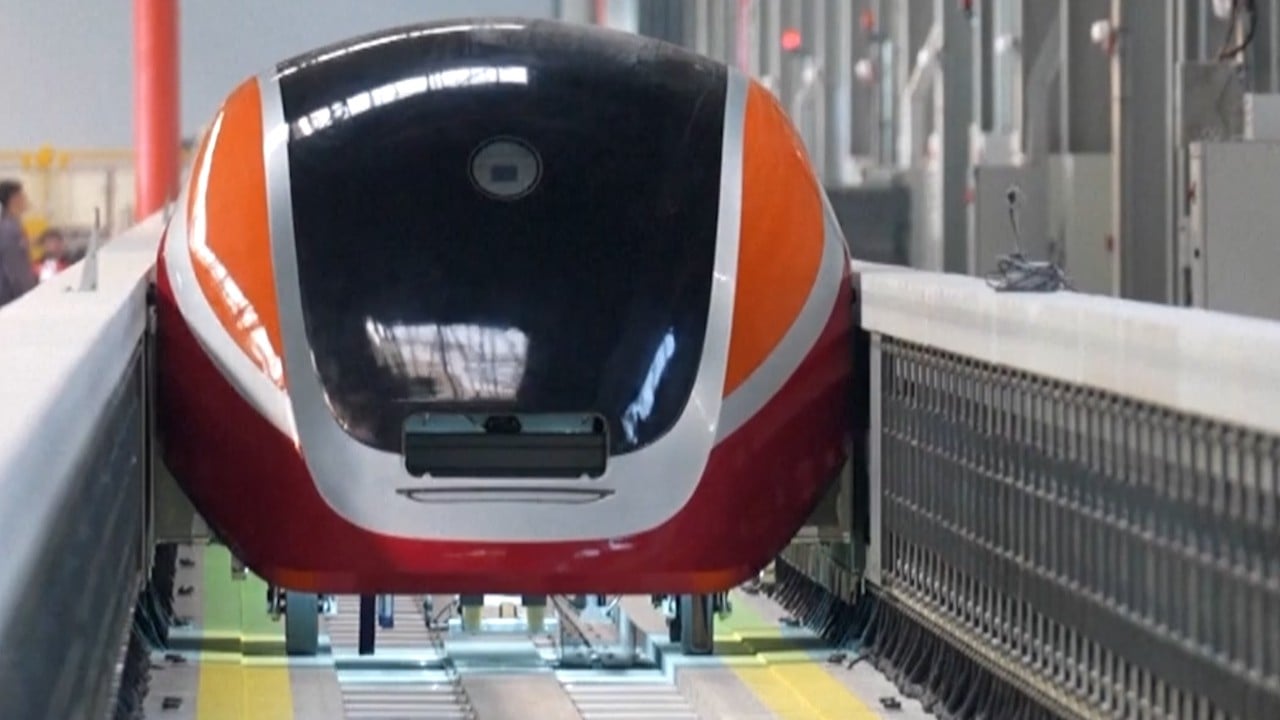
China’s railway investment hits highest level since 2013 as infrastructure focus shifts to border regions, defence
- Total fixed-asset railway investment in the first three months of the year hit 113.55 billion yuan (US$16.5 billion), up by 6.6 per cent from the same period last year
- Increase part of China’s fiscal policies to support a post-coronavirus recovery, as well as efforts to stabilise foreign trade and meet defence demands
China’s railway investment in the first quarter hit its highest level since 2013 amid government efforts to boost the economy and expand infrastructure in Western border regions that are of ever-increasing security and economic importance.
Total fixed-asset railway investment in the first three months of the year hit 113.55 billion yuan (US$16.5 billion), up by 6.6 per cent from the same period last year, China State Railway Group confirmed on Sunday.
It is the highest first-quarter investment in the past decade, although the start of the year is traditionally a slow season for railway construction.
For later this year, the state railway operator will focus on the construction of projects in border areas, including in the autonomous regions of Xinjiang and Tibet, as well as along the new Western land-sea corridor – a trade and logistics passage bridging Western China with the Association of Southeast Asian Nations – it said.
Railway projects are key infrastructure projects controlled by the state and the pacing-up in implementation represents fiscal support for economic growth
The increase is part of China’s fiscal policies to support a post-coronavirus recovery, as well as efforts to stabilise foreign trade and meet defence demands amid China’s worsening ties with the West and some of its neighbouring countries, analysts said.
“Railway projects are key infrastructure projects controlled by the state and the pacing-up in implementation represents fiscal support for economic growth,” said Shao Yu, chief economist at Orient Securities.
“Therefore I see it as an active fiscal policy to ensure steady growth, to let investment spur the economy.”
Sun Zhang, a senior railway expert and former professor at Tongji University, said the focus on expanding the rail network in Western regions showed how they have become more important amid China’s growing economic interests in South and Central Asia and security concerns along its borders.
“So we’re now attaching more importance to Western areas as we pursue more trading partnerships with Central Asia and the Middle East.
“Rail projects in these remote border areas will definitely lose money, but for a vast country with so many neighbours, we also need them to move troops or materiel rapidly because of defence needs.”
How much strain is China’s European rail link facing from the Ukraine crisis?
The CRE, a key cog under President Xi Jinping’s Belt and Road Initiative, is a cross-continent network linking China and Europe via Russia and has served as an increasingly important pipeline for Chinese exports in recent years.
Around 16,000 trips were made along the route last year, transporting 1.6 million twenty-foot equivalent unit (TEU) containers, up by 9 per cent and 10 per cent, respectively, from the previous year, according to data from the state railway operator.
The new Western land-sea corridor, another important trade route under the initiative, witnessed the transport of around 756,000 TEU containers last year, up by 18.5 per cent from 2021, it said.


